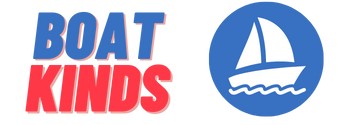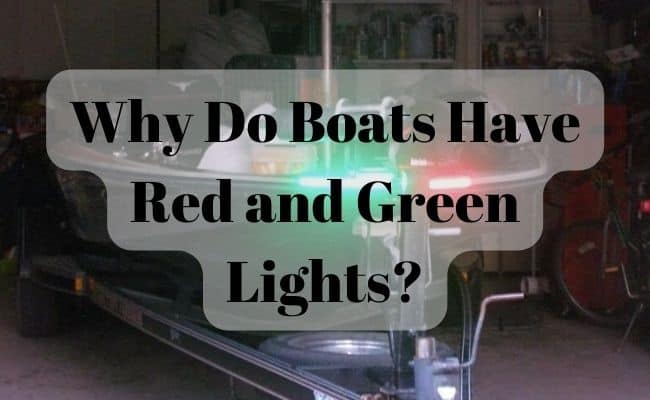Red and green lights on a boat signal the port and starboard sides of the boat. These lights are mandatory and made to be visible to approaching vessels. They are installed to improve visibility and prevent accidents.
In this article, we will explain the benefits of these lights and what they do. This will help you to make informed decisions when choosing a boat. We hope you enjoy reading!
Red and Green Navigation Lights are a Safety Requirement
Boats must display red and green navigation lights for safety reasons. Failure to display navigation lights may result in a fine or worse. It is important to check and replace bulbs, fuses, and other parts of the navigation system before you set off on a trip.
Also, be sure to check your flotation devices, sound-producing devices, and flares. Federal law requires boats to have three flares and at least one red dashboard light.
Properly displaying red and green navigation lights is essential for boat safety. Boats must be able to identify a variety of vehicles in different areas and navigate around them.
These lights should be visible from several angles to ensure that other vessels can easily recognize the boat and avoid an accident. Additionally, the lights should be able to be read from a distance, enabling the boater to judge when an overtaking or meeting situation will arise.
They Prevent Accidents
The red and green lights on boats help boaters avoid accidents. They are also helpful in indicating which side of the boat is starboard and which side is port. Having these lights on your boat is mandatory and is designed to help other boaters see you when you are heading in the wrong direction. The same formula also helps you predict the direction of the other vessels. Here are some examples of the red and green lights on boats.
The main purpose of navigation lights is to alert other boats to your location and type. These lights also help in reducing accidents, which can occur during poor visibility. They are necessary for all weather conditions. If the light is not working, it can cause an accident.
Red lights are more effective than green ones in enhancing eyesight. Boats that do not have them are at risk of accidents. The red and green lights on boats also provide warnings to other boaters of a boat’s movement.
Boat Lights and Their Purpose
One of the most important boating safety features is the proper placement of lights. Boat lights are used to signal both the stern and bow of the vessel. They also signal which vessel has the right of way. This can be extremely helpful in the event of an emergency or collision.
Here is a brief overview of the different types of boat lights and their purpose. In addition to signaling port and starboard sides, they also help the crew of another vessel to know which vessel is giving way.
Navigation Lights Provide Critical Information to Other Boats
The purpose of navigation lights on a boat is to inform other vessels of its location and activity. They help prevent collisions by revealing a vessel’s position, size, and type. This information can help other boats make important collision avoidance decisions.
Navigation lights on a boat are installed above the mast of a ship. To ensure safe passage, the light must be installed in a fixed position on the mast.
Navigation lights are essential for boat safety, assisting other vessels in determining which vessel is giving way. They must be displayed at all times, from sunset to sunrise and during periods of reduced visibility. There are four main types of navigation lights, each with different functions. Sidelights are red and green lights that are visible from the side and head-on. Stern lights are white lights that are visible from behind a boat.
They Illuminate Passageways
One of the most important parts of a boat is its lighting. Boat lights indicate the status of the vessel and help other vessels identify it. However, boat lights also serve other purposes as well. For example, they’re crucial for COLREGS compliance.
The regulations for light placement are laid out in Part C of COLREGS. For example, if a fishing vessel is out to sea, it must display a RED light over a GREEN one. Similarly, a pilot vessel must have a green light over a red one.
Aside from their aesthetic appeal, boat lights also serve important functions. A seasoned sailor can use them to determine where he or she is at night and avoid collisions with other vessels.
For instance, a red port light means that the vessel is approaching another boat or is making a stop. Those without a right of way should give way to the approaching boat. The same is true for the white stern light.
How the Boat Lights Help Determine Orientation and Direction
The lights on your boat can tell other vessels your orientation and direction. These lights are color-coded green and red to help regulate traffic. They also tell other vessels which vessel has the “right of way.”
When you use them properly, they can prevent collisions. Read on to learn how these lights work and why they are so important. It will help you become a better boater. And, most importantly, these lights can save you a lot of money on fuel.
There are three kinds of navigation lights on a boat. Red lights indicate that a vessel approaching from the port side is giving way while green lights mean that another vessel is giving way. You can determine which type of vessel is giving way by the type of lights the other boat displays.
Red lights indicate that a vessel is giving way and green lights mean a Stand-On situation. The purpose of the lights is to help determine which is the give-way vessel.
They Indicate Which Boat Has the “Right of Way”
While it can be hard to know who has the “right of way,” boaters can use a navigational light to help them determine which vessel has right of way. A red light indicates a vessel on the port side and a green light indicates a vessel on the starboard side. These two lights will indicate whether a vessel is giving way or slowing down. The green light will indicate which vessel has the “right of way.”
They are Damaged if Improperly Used as a Handle
A boat must display the correct nautical lights. If they are not displayed properly, they can cause damage. These lights must be displayed according to the length of the boat and the type of propulsion. They indicate the vessel’s activity and help other vessels make collision-avoidance decisions. They should not be used as a handle or handlebar. However, boat lights are important to keep visible.

